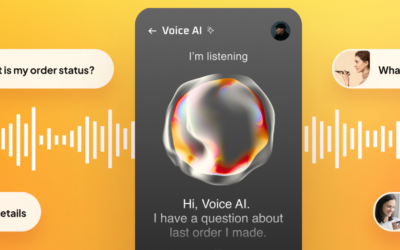With companies across sectors looking to keep costs under control, executives are increasingly looking to automation to keep those costs down. However, it would be a mistake to rely too much on automation, especially when it comes to customer support. Today we will tell you about how you can find the right balance between automation and work done by human employees. Let’s start by taking a look at the shortcomings of technology.
Where Does Technology Fall Short?
While there are many powerful customer support tools, such as CRM systems and AI chatbots, they have their shortcomings. Below we list and talk about a few of them:
- Lack of emotion – When people contact support, they are looking for some empathy, and they want some feedback and acknowledgments of the emotions they are experiencing. For example, if the customer is frustrated with a product, they want to hear something like “I understand your frustration.” This is something even the most advanced AI chatbots cannot yet discern or understand.
- People still need people – A lot of research has been on which situations customers prefer to speak with human support agents. One recent survey found that more than half of customers (55%) prefer talking to a human on the phone. If the customer feels like the automated system is not capable of understanding the full complexity of the issue, or it takes way too long to resolve the problem, they will opt to speak to a human agent.
- More effort is required on the part of the customer – With many automated systems, certain processes can be very complex. For example, the customer might have a simple question, but the chatbot cannot process everything the customer is saying. This leads to frustration because the customer needs to do more work and the automation you have set up only gets in the way.
How Can Humans and Technology Work Side-By-Side?
Due to the shortcomings listed above and many others, it would be a much better approach to have technology complement the work of your human customer support agents. Here’s how you can find the right balance between automation and a personal approach:
- Keep the human interactions, but cut out the administrative stuff – The automated systems can be very useful for getting preliminary information such as customer information, invoice numbers, and anything else you need to handle customer inquiries. When the system has collected this information, it will pass it along to the human agent, who will show empathy and make emotional connections with customers so that they understand that their voices and issues are being heard.
- Promote seamless interactions – A lot of companies talk about omnichannel support, but very few actually accomplish this in practice. Basically, what this means is that regardless of how the customer contacts you, there will be a history of their interactions with the agent, so they will not have to repeat themselves over and over again. This is very useful if a customer contacts you first via social media and then calls in or any other combination. This way, the agent will already have all of the previous interaction histories with the customer, which can be very useful during support calls.
- Close the gap between humans and machines – Since you have so much technology at your disposal, why not use it to close the distance between you and the customer. For example, have you ever considered offering video customer support? This is a new method that is quickly gaining traction among companies and customers since it allows both parties to feel as if they are in the same room.
Trust Pexly With All of Your Customer Support Needs
Pexly is one of the largest customer support providers in Eastern Europe, servicing businesses from startups to Fortune 500 companies. Our size and location allow us to source and recruit the right candidates for your project quickly, and we will be able to scale your project without sacrificing the quality of the work provided. Contact us today to learn more about how we can help you.



